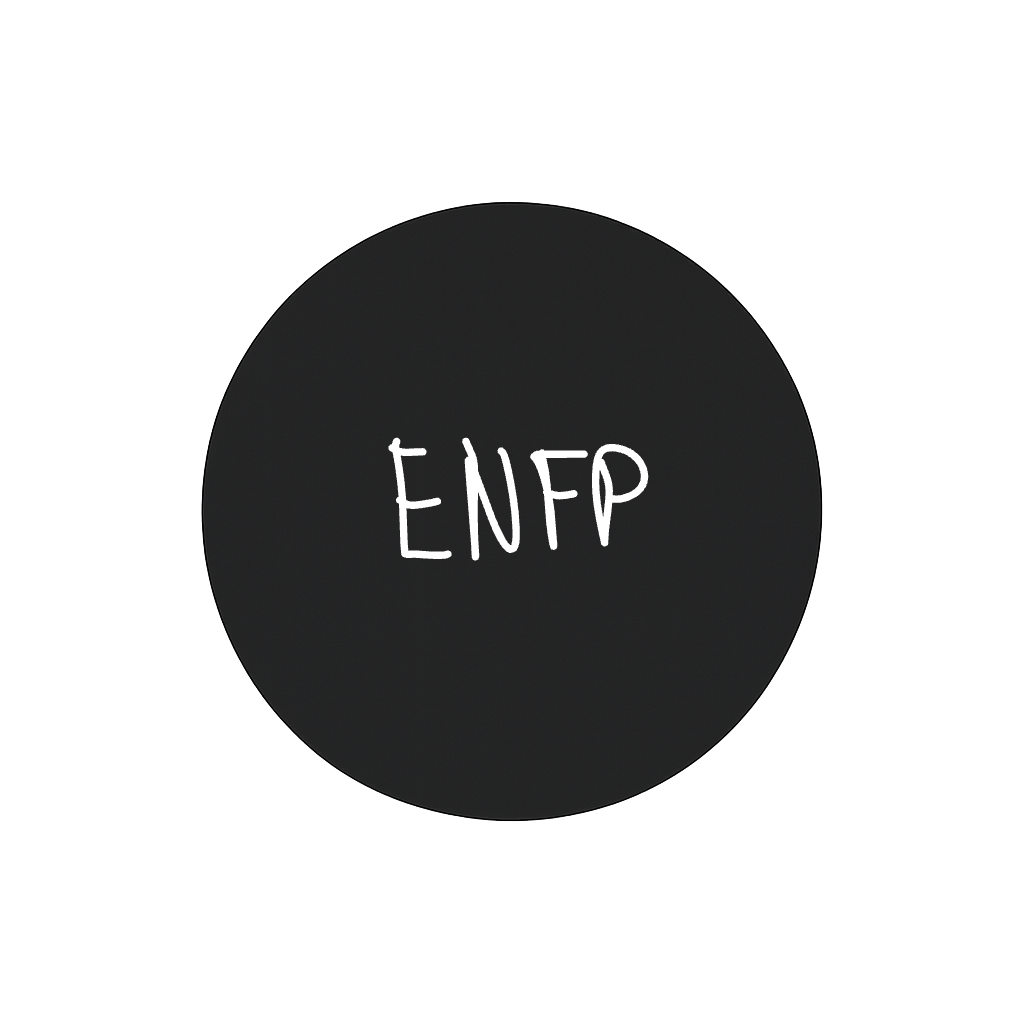The ENFP personality type, as defined by the Myers-Briggs Type Indicator (MBTI), is known for its enthusiasm, creativity, and adaptability. Understanding the interplay of its cognitive functions—Extraverted Intuition (Ne), Introverted Feeling (Fi), Extraverted Thinking (Te), and Introverted Sensing (Si)—provides valuable insights into how ENFPs perceive the world, make decisions, and interact with others. Below is a comprehensive breakdown of these functions individually and in combination.
ENFP Cognitive Functions Overview
Dominant Function: Extraverted Intuition (Ne)
Role: Ne is the primary lens through which ENFPs understand the world. It allows them to see multiple possibilities, generate new ideas, and make connections between seemingly unrelated concepts.
Characteristics: Creative, exploratory, future-focused, adaptable, and quick to see potential opportunities.
Auxiliary Function: Introverted Feeling (Fi)
Role: Fi provides ENFPs with a deep sense of personal values, helping them make decisions that align with their core beliefs and maintain authenticity.
Characteristics: Values-driven, empathetic, authentic, and focused on personal integrity.
Tertiary Function: Extraverted Thinking (Te)
Role: Te helps ENFPs organize their external environment, make decisions efficiently, and achieve their goals.
Characteristics: Logical, goal-oriented, decisive, structured, and focused on implementation.
Inferior Function: Introverted Sensing (Si)
Role: Si relates to the past and personal experiences. For ENFPs, it is less developed but can help them draw from their memories and maintain a sense of continuity.
Characteristics: Reflective, detail-oriented, cautious, and focused on past experiences.
Interactions Between Cognitive Functions
Understanding how these functions interact can illuminate the complexities of the ENFP personality. Here’s a detailed look at each pairing and combination:
Ne + Fi (Dominant + Auxiliary)
Synergy: This combination allows ENFPs to explore multiple possibilities while staying true to their personal values. Ne provides creativity, while Fi ensures that their ideas align with their inner beliefs.
Application: ENFPs often use Ne to come up with innovative ideas and employ Fi to ensure these ideas resonate with their authentic selves, making them passionate advocates for their beliefs.
Ne + Te (Dominant + Tertiary)
Balancing Creativity and Execution: Ne generates a wealth of ideas, while Te helps ENFPs bring structure and logic to their plans.
Application: ENFPs may use Te to organize their creative ideas and implement them effectively, allowing them to turn their visions into reality.
Te + Si (Tertiary + Inferior)
Practical Execution with Reference to the Past: Te drives logical decision-making, while Si helps ENFPs draw on past experiences to guide their actions.
Application: When facing practical challenges, ENFPs can use Te to structure their approach and Si to learn from past experiences, ensuring that they are building on previous knowledge.
Ne and Si (Dominant and Inferior)
Balancing Future Possibilities with Past Experiences: Ne’s focus on new possibilities can sometimes overshadow the stability emphasized by Si.
Challenge: ENFPs may struggle to stay grounded, leading them to overlook important details or become disconnected from past lessons.
Growth Opportunity: Developing Si can help ENFPs integrate their innovative ideas with practical experience, ensuring a more balanced approach to problem-solving.
Fi and Te (Auxiliary and Tertiary)
Integrating Values and Logic: Fi emphasizes personal values, while Te ensures that decisions are logically sound and actionable.
Application: ENFPs can navigate complex situations by balancing their inner values with logical efficiency, allowing them to make meaningful and effective decisions.
Practical Implications for ENFPs
Strengths
- Innovative Thinking: ENFPs excel at generating new ideas and seeing possibilities that others may overlook.
- Strong Personal Values: Fi provides ENFPs with a deep sense of authenticity, allowing them to make decisions that align with their core beliefs.
- Charismatic Communication: Ne helps ENFPs connect with others, making them engaging and inspiring communicators.
- Adaptability: Developing Si can enhance their ability to draw from past experiences and maintain consistency when needed.
Challenges
- Overemphasis on Ideas: Relying heavily on Ne may lead ENFPs to overlook important details or fail to follow through on their ideas.
- Difficulty with Routine: Si, being less developed, can make it challenging for ENFPs to engage with repetitive tasks or maintain consistency.
- Balancing Logic and Values: Ensuring that decisions are both logically sound and aligned with personal values can sometimes be a delicate balance.
- Staying Grounded: Focusing on new possibilities may cause ENFPs to lose touch with practical realities or overlook the importance of past experiences.
Growth Strategies
- Enhancing Si: Engaging in activities that focus on past experiences, such as journaling or reflecting on lessons learned, can help strengthen Si.
- Developing Te: Practicing logical organization and planning can bolster Te, aiding in more effective implementation of their ideas.
- Balancing Exploration with Practicality: Making a conscious effort to integrate new ideas with practical considerations can help ENFPs ensure their innovations are feasible and impactful.
- Managing Follow-Through: Developing habits and routines can help ENFPs follow through on their ideas and maintain consistency in their endeavors.
Conclusion
The ENFP’s cognitive functions—Ne, Fi, Te, and Si—work in a dynamic interplay that defines their unique approach to life. By leveraging the strengths of each function and addressing their inherent challenges, ENFPs can achieve personal growth, enhance their effectiveness, and make meaningful contributions to their pursuits. Understanding these dynamics not only aids ENFPs in self-awareness but also helps others appreciate the creativity and enthusiasm of this insightful personality type.
***
